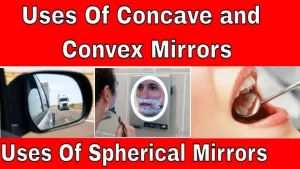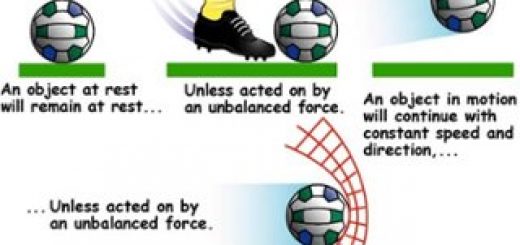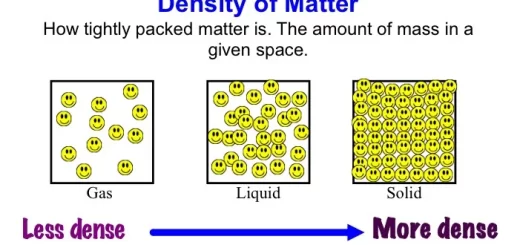Spherical mirror use, Properties of Images formed by Concave mirror and Convex mirror
The convex mirror is called a diverging mirror, while the concave mirror is called a converging mirror because the convex mirror diverges the parallel light rays after reflection, while the concave mirror converges (collects) the parallel light rays after reflection. The image formed by the convex mirror cannot be received on a screen because it is a virtual image.
Concave mirror
According to the Old Greek legend that: Archimedes knew a lot about mirrors and the use of sunlight as a weapon against the Roman fleet that invaded Sicily in 212 B.C. A huge concave mirror was placed to collect the Sun rays and directed them towards the sails of ships (which represents the focus of the mirror) so as to generate extreme heat that led to the burning of these sails and turning them into glazing fireballs.
A concave mirror is used to generate high heat energy because the concave mirror collects the reflected light rays falling on it in one point (focus) generating high heat energy.
The focus of the concave mirror
The focus of the concave mirror is produced due to the collection of the reflected rays of the parallel light rays coming from a far light source (as the Sun). Light rays of the Sun are parallel rays and so as any far light source.
Focal length (f) = ½ x radius of mirror curvature (r)
f = ½ r
Rules to determine the direction of the reflected light rays incident on the concave mirror
- When the incident ray is parallel to the principal axis, It reflects passing through the focus (F).
- When the incident ray passes through the focus (F), It reflects parallel to the principal axis.
- When the incident ray passes through the centre of curvature (C), It reflects back on itself.
The light ray that passes through the centre of curvature, reflects on itself because it falls perpendicular to the spherical mirror, so its angle of incidence equals its angle of reflection equals zero.
When you place an object in front of a concave mirror, the position of the formed image and its properties can be determined by using only two rays from the previous three rays where the image is formed at the intersection of the reflected rays or their extensions.
The cases of the formation of the images by the concave mirror (converging mirror)
To determine the position and properties of the images formed by the concave mirror, follow the following steps:
- Use the compass to draw a curved line that represents the concave mirror. Then detect both C & P.
- Draw the principal al axis of the mirror and detect the position of its focus (F) which lies at the midpoint between C & P.
- Draw a vertical arrow on the principal axis to represent the position of an object.
- Draw a ray from the highest point of the object, where it falls parallel to the principal axis and thus reflects passing through the focus.
- Draw another ray from the same point, where it falls passing through the focus, so, it reflects parallel to the principal axis.
- Determine the position where the two reflecting rays intersect, which is the image of the highest point of the object.
- Determine the position and properties of the formed image. Position of the formed image: Between (F) and (C). Properties of the formed image: Real, inverted, and diminished (smaller than the object).
- Repeat the steps from 4 to 8 several times by changing the position of the object each time.
The real image is the image that can be received on a screen.
Properties of the images formed by the concave mirror
The properties of the formed images by the concave mirror are different according to the position of the object from the mirror as follows:
- When the object is very far from the mirror [The incident light rays are parallel to each other and to the principal axis). The image is at the focus, The image is Real and very tiny (dot).
- When the object is at a distance greater than double the focal length from the mirror, The image is at a distance greater than the focal length, but less than double the focal length [Between the focus (F) and the centre of curvature (C)], The image is real, inverted, diminished (smaller than the object).
- When the object is at a distance equals to double the focal length [At the centre of curvature (C)], The image is at the centre of curvature (C), The image is real, inverted, equal to the object.
- When the object is at a distance greater than the focal length, but less than double the focal length [Between the focus (F) and the centre of curvature (C)], The image is at a distance greater than double the focal length, The image is real, inverted, magnified [larger than the object].
- When the object is at the focus, No image is formed.
- When the object is at a distance less than the focal length [Between the focus (F) and the pole (P)], the image is behind the mirror, the image is virtual, erect, and magnified.
To obtain a virtual, upright, and magnified image of your face with a concave mirror, you should stand at a distance less than its focal length. If the object is put at the focus of the concave mirror, there is no image formed. This is because the extensions of the reflected light rays are parallel to each other (don’t intersect).
The curvature radius of the concave mirror
When you place the concave mirror on the holder in front of the light source (the light box which has a hole), you should move the mirror nearer and farther until an image of the hole is formed next to it and is equal to it, and you can measure the distance between the mirror and the formed image of the hole.
The position of the formed image of the hole is called the center of the mirror curvature”, The distance between the mirror and the formed image of the hole is called the radius of mirror curvature.
Mirror curvature radius (r) = 2 f
r = 2 f
Uses of concave mirrors
The concave mirror is a converging mirror, so that it is used for many purposes, it is used:
- In a pocket torch, to reflect the light of the lamp.
- In front lights of the cars, to reflect the light of the lamp.
- In shaving, to get an enlarged & erect image of the face.
- In marine lighthouses that are found at marine ports, to reflect the light of the lamp to guide ships.
- In aircrafts landing at airports, to reflect the light of the lamp to guide the aeroplanes.
- In solar ovens, to heat food, water etc.
- In dentists clinic, to form magnified images of the teeth at the back of the mouth cavity (molars teeth).
- In some types of telescopes, to monitor space and also form enlarged and near images of celestial bodies.
Convex mirror
When the concave mirror is replaced by a convex mirror, the formed image cannot be received on the screen because it is a virtual image that is formed as a result of the intersection of the extensions of the reflected light rays.
Properties of the formed image by the convex mirror
Wherever the position of the object in front of the convex mirror, the properties of the formed image are always: Virtual, Erect, and Diminished. The position of the image formed by a convex mirror is behind the mirror.
The image formed by a convex mirror is always virtual because it is formed behind the mirror from the intersection of the extensions of the reflected light rays and it can’t be received on a screen.
Uses of convex mirrors
A convex mirror is a diverging mirror, so that it is used:
- In cars (on the right and the left sides of the driver), to form an erect and minimized image for the way behind the car.
- At shopping centers, To allow high rates of security at these places.
- On the corners of the narrow roads to monitor cars movement on these narrow crossroads to avoid accidents.
- At the cars park, to monitor cars movement at the park to avoid accidents.
- At the platforms of the Metro and railway stations, to avoid passenger injury at opening or closing the Metro doors.
Focus of the concave mirror and focus of the convex mirror
The focus of the concave mirror is a real focus, It is the point of collection of the reflected light rays, and it is located in front of the concave mirror.
The focus of the convex mirror is a virtual focus, It is the point of collection of the extensions of the reflected light rays, and it is located behind the convex mirror.
The real image
- It can be received on a screen, It is formed as a result of the intersection of the reflected light rays, It is formed in front of the mirror, and it is always inverted.
- It is formed in the case of using of: a Concave mirror, [It is diminished, magnified or equal to the object according to the position of the object from the mirror].
The virtual image
- It cannot be received on a screen, It is formed as a result of the intersection of the extensions of the reflected light rays, It is formed behind the mirror, and it is always erect.
- It is formed in the case of using of: a Concave mirror, [When the object is at a distance less than the focal length, and it is magnified). Convex mirror, [When the object is at any distance of the mirror, and it is diminished], Plane mirror, [When the object is at any distance of the mirror, and it is equal to the object].
The real image can be received on a screen, while the virtual image cannot because the real image is formed in front of the mirror from the intersection of the reflected light rays, while a virtual image is formed behind the mirror from the intersection of the extensions of the reflected rays.
You can subscribe to Science Online on YouTube from this link: Science Online
You can download the Science Online application on Google Play from this link: Science Online Apps on Google Play
Uses of the concave mirror and the convex mirror in our daily life
Laws of light reflection, Plane mirrors, Spherical mirrors, Concave mirror & Convex mirror
Physical Quantities, Scalars, Vectors, Distance, Displacement, Speed & Velocity
Acceleration types, units, importance & Graphic representation of moving in a straight line
Motion in one direction, Types of Speed, Average Speed & Relative Speed
Lenses use, types, Convex lens, Concave lens, Vision defects, Contact lenses & Cataract




